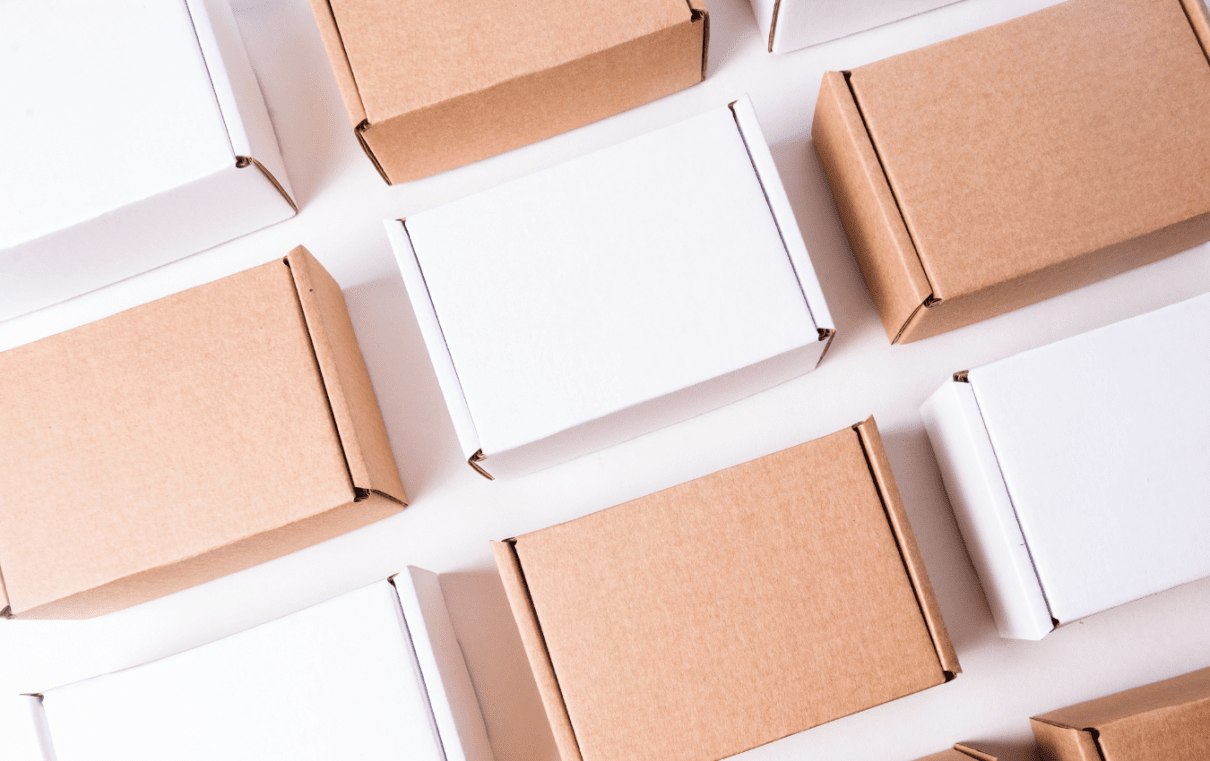Home » Kraft vs. White Corrugated Material: Making the Right Choice
Kraft vs. White Corrugated Material: Making the Right Choice

When it comes to packaging solutions, corrugated boxes are at the forefront of industry choices, providing durability, flexibility, and sustainability. However, the debate often arises between using kraft or white corrugated material. Both options have their unique benefits and considerations. Here’s a detailed comparison to guide you in making the right choice for your packaging needs.
Aesthetic Appeal
- White Corrugated Material: White corrugated boxes offer a clean, crisp appearance that’s perfect for showcasing high-resolution graphics and detailed print. Their smooth surface is ideal for businesses looking to present a polished and premium image to their customers. Great for retail packaging, especially for electronic items, cosmetics, and luxury goods.
- Kraft Corrugated Material: The natural brown hue of kraft corrugated boxes gives them a rustic, organic feel. This is a favorite for brands aiming for an eco-friendly or artisanal image. They don’t present graphics as vibrantly as white boxes, but they carry a charm of their own.
Printing and Branding
- White Corrugated Material: The white background serves as a blank canvas, ensuring that colors stand out vibrantly and true to their original hue. This is essential for brands with specific color palettes and detailed branding requirements.
- Kraft Corrugated Material: The brownish tone of kraft corrugated material can influence the appearance of printed colors. While this might not be ideal for brands requiring precise color matching, it works well for those aiming for a natural or vintage aesthetic. Plus, minimalistic designs with black or darker hues often pop beautifully on kraft.
Environmental Considerations
- White Corrugated Material: The bleaching process used to achieve the white color can have environmental implications. However, many suppliers now offer white corrugated material made from recycled fibers or with eco-friendly bleaching alternatives.
- Kraft Corrugated Material: Typically more eco-friendly, kraft corrugated boxes are often made from unbleached paper pulp. The absence of the bleaching process means fewer chemicals are involved, making them a more sustainable choice for environmentally-conscious businesses.
Cost
- White Corrugated Material: Generally, white corrugated boxes tend to be slightly more expensive than their kraft counterparts, due to the additional processing required to achieve their pristine appearance.
- Kraft Corrugated Material: Being less processed, kraft corrugated material usually comes with a lower price tag, making them a cost-effective choice for bulk packaging needs.
Durability
Both kraft and white corrugated materials offer excellent durability and protection, depending on their flute size and wall construction. However, any perceived difference in strength between the two is more about the construction and thickness of the corrugated box rather than the color or type of paper used.
Market Perception
- White Corrugated Material: Often associated with a higher-end market perception, white boxes can elevate a product’s perceived value.
- Kraft Corrugated Material: Kraft boxes exude an earthy, organic vibe and are often associated with sustainability and eco-friendliness, making them a favorite for green and artisanal brands.
Final Thoughts
When deciding between kraft and white corrugated materials, it’s essential to consider your brand’s image, budget, and environmental stance. If you’re aiming for a high-end, polished appearance with vibrant printing, white corrugated material is your best bet. On the other hand, if you want to exude a natural, eco-friendly vibe with cost-effectiveness, kraft is the way to go.
Remember, the choice between kraft and white isn’t just about aesthetics or cost – it’s about aligning the packaging with your brand’s values and message. Whichever you choose, ensure it resonates with your target audience and serves your product’s needs effectively.
If you are interested in corrugated boxes, then partner with Brown Packaging today to get started.
Rising tariffs and trade restrictions on Chinese manufacturing are accelerating the need for U.S. companies to reevaluate their packaging supply chains. Many packaging buyers who
POP display design must serve two masters — maximizing visual impact in-store while minimizing logistics costs. Engineering the right balance between display footprint, assembly complexity,
Functional features like tear strips, windows, and hang tabs can enhance consumer experience and retail appeal—but they also introduce engineering challenges. Each modification affects structural
Phat Snax is redefining the snack aisle with a mission to make America’s snacks better for you — without killing the flavor. Their products, like
When choosing corrugated packaging, box style directly impacts cost, strength, speed of packing, and customer experience. Two of the most common options are the Regular
The holiday season pushes packaging supply chains to their limits. With surging e-commerce demand, constrained carrier capacity, and rising material costs, packaging buyers must navigate
Home » Kraft vs. White Corrugated Material: Making the Right Choice
Corrugated boxes have been a staple in packaging and shipping for decades, and they continue to play a crucial role in various industries. As we
Packaging is an essential component of product marketing, as it not only protects the products but also helps in promoting them. Boxes are the most
When choosing corrugated packaging, box style directly impacts cost, strength, speed of packing, and customer experience. Two of the most common options are the Regular